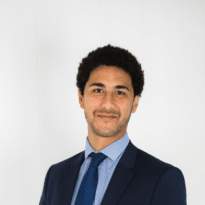One planner, one paraplanner
Prestwood Etheridge & Russell works on the basis that one financial planner should be served by one paraplanner “and vice versa”, Richard says.
“The financial planner should be there to do two things: Give advice and make money,” he says. “Everything else could and should be done by the paraplanner and, where necessary, any administrative team. If the system is working efficiently the financial planner should only have to come into the office two to three times a week, to see good profitable clients. And when they do, all the information should be ready for them to pick up, familiarise themselves with the client and use in the meeting. Then they should take an hour after the meeting to write up the minutes and pass that to the paraplanner to get on with what needs to be done.”
Just how many clients a financial planner can deal with effectively will depend on the type of client and the type of service being delivered, Richard says. The firm is selective in the clients it will take on and it has a very transparent service and charging structure. Terms and conditions are sent to prospective clients before the first meeting so they know exactly what they will get and that they will be charged on a ‘time spent’ basis. That ensures they get no “time wasters”, Richard says.
As part of its procedures everyone in the firm completes daily time sheets. The firm has them going back some 27-28 years. “The time sheets are completed to the allow us to know how much time we spend on each client and, to the pound, how much each client is costing the business. So we can calculate on a fee-only basis what a typical client will cost and that can help in deciding on the kind of clients we want to have in the future. Also, detailing the work in this way demonstrates to the client just how much work goes into handling their financial affairs outside of the annual client meeting – that is, the paraplanning.”
Richard is the main point of contact for all clients, rather than the financial planner. “When a prospective client comes in, I will have been responsible for arranging the meeting, I will be part of that meeting and if they ring in I will be the person who answers the phone. If you establish the territory at the start that helps build the relationship in the way that you want it to run,” he says.
Likewise, Richard is part of all the client meetings. “I’ve always felt very strongly that financial planning is a three-way relationship between the client, the financial planner and the paraplanner. All three bring something very different to that relationship and they all have to work together very closely.
When I ask how long a typical suitability report might take to construct, Richard is keen to point out that they don’t produce reports. “To our mind a report is something that can be produced without any particular reference to the client’s financial plan. It can be done just by inputting figures and is likely to sit on a shelf or in a draw gathering dust. We work with the client to produce their financial plan, which is a living document that is discussed and amended in the light of the meeting between the client, the financial planner and the paraplanner. They are not reports,” he stresses.
“We have a meeting with the client in which the financial plan is a snapshot of their current position. So as a paraplanner I don’t create a plan that solves everything because during the course of a meeting so much changes. We rarely get any follow up phone calls because within the meeting we’ve discussed things, it’s then written into the financial plan and it’s also documented as a set of minutes from the meeting. Everybody knows who is going to do what by when and why it’s going to be done. Clients come here to make a decision and they leave hopefully with a better life than when they came in.”






























